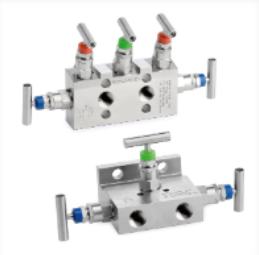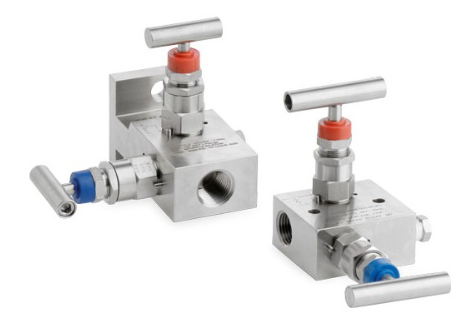
Guide for Manifold Valve Working, Benefits, and Application
July 29, 2024Fluid control systems are the lifeblood of various industries, playing crucial roles in everything from manufacturing and transportation to energy production and healthcare. Within these systems, a critical component called a Manifold Valve plays a vital role in regulating and directing the flow of fluids. This blog post aims to demystify manifold valves, providing an overview of their purpose, types, and benefits.
What is a Manifold Valve?
A manifold valve is a specialized valve assembly that combines multiple individual valves into a single unit. Consider a hub with several exits, each managed by a separate valve. This integrated design offers several advantages over using individual valves, making it a preferred choice in various applications.
Think of it like this: Instead of having a collection of independent valves scattered around your system, a manifold valve provides a centralized and organized way to control the flow of fluids through several channels.
Types of Manifold Valves:
There are various types of manifold valves available, each designed for specific applications and functionalities. Here are some common types:
- Block and Bleed Manifolds: These valves allow the isolation of specific sections of a system for maintenance or repairs while allowing the rest of the system to function. They also offer controlled bleeding of fluids, making them ideal for pressure relief and purging operations.
- Ball Valve Manifolds: These utilize ball valves in a compact configuration, offering reliable on/off control for multiple lines simultaneously. They are popular choices for systems requiring frequent switching of fluid flow.
- Needle Valve Manifolds: These offer precise flow control through needle valves, making them suitable for applications requiring fine adjustments in fluid flow rate. They are often used in laboratory settings and other situations where meticulous control is essential.
Benefits of Manifold Valve:
Integrating a Manifold Valve into your fluid control system offers numerous benefits. Some key advantages include:
- Space Saving: Combining multiple valves into one unit significantly reduces the overall footprint required for valve installation. This is especially useful in applications where there is a shortage of space.
- Reduced Cost: Compared to using individual valves, manifold valve can be more cost-effective due to their compact design and reduced material usage. Additionally, they streamline installation and maintenance processes.
- Improved Efficiency: The centralized design of manifold valve simplifies operation and maintenance, leading to increased efficiency and productivity. Operators can easily access and control multiple valves simultaneously.
- Reduced Leak Potential: By minimizing connections and potential leak points, manifold valves enhance the overall reliability of the system and reduce the risk of leaks and fluid contamination.
Applications of Manifold Valves:
Manifold valves find application in a wide range of industries due to their versatility and functionality. Here are a few examples:
- Chemical Processing: Regulating and controlling the flow of various chemicals during production processes.
- Manufacturing: controlling the flow of fluids within machinery and equipment used in manufacturing processes.
- HVAC Systems: directing and regulating in heating, ventilation, and air conditioning systems the movement of water and air.
- Medical Equipment: Precisely controlling the flow of fluids in medical devices and diagnostic equipment.
In conclusion, Manifold Valve are essential components in modern fluid control systems. Their affordability, simplicity of use, and small size make them valuable tools for various applications across diverse industries. Understanding their functionalities and benefits can be crucial for optimizing the performance and efficiency of your fluid control systems.




